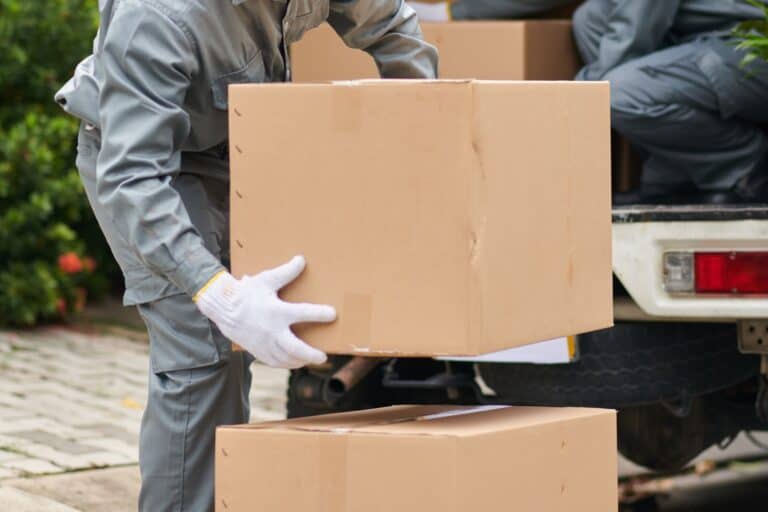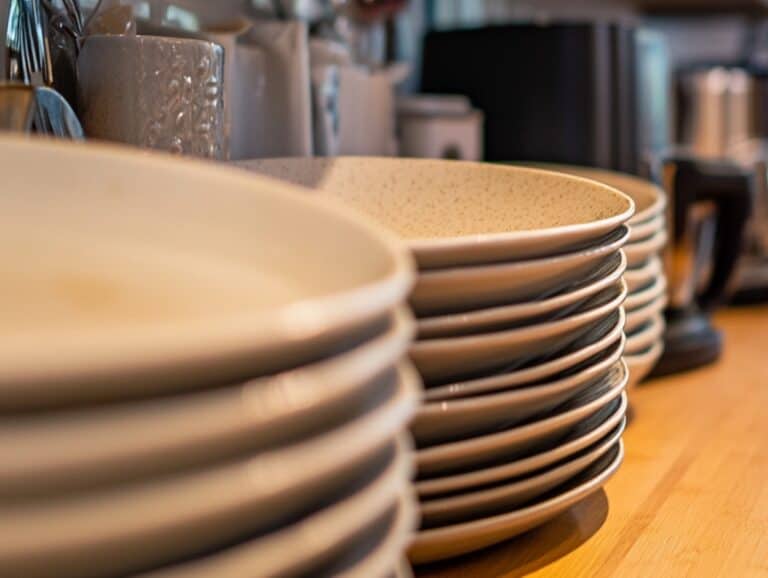Wondering how to create a moving checklist that covers all your bases? This comprehensive guide will walk you through each critical step of the moving process, from initial planning and efficient packing to finally settling into your new home. By following along, you can ensure that you don’t miss anything important, making your move as smooth and stress-free as possible. With careful preparation, you’ll be ready to tackle any challenges that arise during your relocation.
Key Takeaways
- Start planning your move well in advance to reduce last-minute stress and create a comprehensive timeline, ensuring all aspects of the moving process are accounted for and executed smoothly.
- Declutter your belongings to streamline packing and minimise moving costs, while also making an inventory list to track your items, ensuring nothing is left behind and your new space is organized.
- Research and choose a reliable moving company by comparing estimates and checking reviews to ensure a smooth moving process, providing peace of mind that your possessions are in safe hands and will arrive on time.
Start Early and Plan Ahead
Planning ahead is crucial for a successful move. Early preparations help you organise effectively and manage logistical challenges. Creating a detailed timeline can prevent last-minute stress and ensure all tasks are addressed promptly. An ultimate moving checklist is ideal, providing ample time for essential tasks.
Six weeks before your moving date, discuss your plans with family members and friends to coordinate help. This is also the time to start packing less frequently used items.
Three to four weeks before the move, concentrate on making an inventory, sorting belongings, and researching moving companies. Select your moving company during this time and confirm arrangements to ensure reliable assistance on the big day.
Declutter and Inventory Your Belongings
Decluttering before a move streamlines the packing process and reduces moving costs. Begin early to avoid feeling overwhelmed. Assess each item for its usefulness and space in your new home. Items unused in the past year might be ready to go.
Organise belongings by category to decide what to keep, donate, or sell. Hosting a garage sale or selling online can declutter your home and provide extra cash. Donating items to local charities also expedites the decluttering process.
Once you’ve sorted through all your belongings, create a detailed inventory list. This will help you keep track of your items and ensure nothing gets lost during the move. Be sure to separate valuable items and pack them securely.
Research and Choose Your Moving Company
Selecting the right moving company is a critical step in your moving process. Investigate multiple online sources to gather information about different companies and their services. Check reviews on independent sites, as company websites may display biassed testimonials.
Seek accreditation from reputable trade associations like the British Association of Removers, which indicates reliable service. Obtain written estimates from at least three moving companies to compare costs and services, helping you make an informed decision and avoid misunderstandings.
Carefully review all documents before signing, paying close attention to details such as coverage and additional services to ensure you’re getting the best deal for your needs.
Set a Moving Budget

A moving budget helps avoid unexpected expenses. List all potential costs, including moving company fees, packing supplies, and any additional expenses. Consider the impact of taking time off work on your monthly income and overall budget.
Choose a payment method that suits you, whether it’s a credit card, money order, cashier’s check, or cash. Tipping movers 10 to 15 per cent of the total fee is customary based on the quality of service provided.
Take advantage of any moving expense benefits offered by your employer. Purchasing moving insurance provides peace of mind by covering lost or damaged items during the move.
Create a Moving Binder
A moving binder serves as a central hub for all essential documents related to your move. Include sections for checklists, inventory lists, important contacts, and financial documents such as estimates and receipts.
Customise the binder to fit your needs and keep it updated throughout the moving process. Digital backups enhance security and make information easily accessible.
Gather Packing Supplies
Gathering the right packing supplies is crucial. Essential items include boxes, tape, bubble wrap, and permanent markers. Speciality containers like dish barrels and wardrobe boxes protect specific items during the move.
Free boxes are often available at local businesses like restaurants and grocery stores. Online platforms are convenient for purchasing packing materials, and supermarkets can help with any last-minute needs.
Make sure all boxes are clean and sturdy to avoid issues during the move. Packing tape and tissue paper from discount stores are essential for securely closing boxes.
Notify Important Parties
Notify utility companies, such as gas, electricity, and water providers, about your move to avoid unnecessary charges. Close existing accounts and forward final bills to your new address.
Update your address with financial institutions like banks and credit card companies to prevent identity theft. Inform your employer about your new address for payroll updates.
Set up a postal redirect with Royal Mail to ensure you receive mail sent to your old address for a limited time after your move.
Organise School and Medical Records
When transferring your child’s school records, send a common transfer file along with an educational record to the new school. Share the curricular record with the new school when a pupil is being considered for enrollment.
Change your address with your GP and register with a new one in your new area. Finding new healthcare providers and transferring medical records ensures continuity of care after a move.
Pack Strategically
Packing strategically ensures a smooth move. Start with seldom-used items like books and seasonal decorations. Use colour-coded labels for boxes to quickly identify their destination rooms. Group similar items together to simplify unpacking and organisation.
Photograph electronics setups before disassembly for easier reconnection later. Use sturdy containers to protect fragile items during the move. Disassembling larger furniture saves space and eases transport. Pack essential items separately for easy access upon arrival.
Update Your Address
Fill out a change-of-address form at the local post office or online. Notify banks, credit card companies, utility companies, your employer, brokerage firms, and subscription services about your new address.
Update your address with the DVLA if you own a vehicle. Ensure your TV licence reflects your new address for compliance. Set up mail redirection for at least three months to ensure important letters reach you.
Prepare Your Old House for Moving Day

Before moving day, clean your old home or hire a cleaning company to ensure it is pristine. Empty, clean, and defrost the refrigerator at least 24 hours before moving to prevent spills. Perform a final inspection of your old house to ensure no belongings are left behind, including obscure areas like the loft. Take final meter readings for utilities before leaving to ensure accurate billing.
Finalise Moving Day Arrangements to East London
Finalise arrangements with your movers, confirming the move details and any special instructions. Communicate about the layout of your new home to expedite the unloading process. Double-check that all items are loaded onto the moving truck before leaving your old home. Verify parking restrictions ahead of time to avoid complications on moving day.
Unpack and Settle into Your New Home
On the first night in your new residence, focus on unpacking the essentials for a smoother transition. Prioritise setting up beds and toiletries to streamline settling in. Setting up utilities such as gas, water, and electricity should be one of the first tasks after moving in.
Understand your local area, including nearby healthcare facilities and transportation, to help with settling in. Creating a routine and engaging with community events can ease the transition into your new life. Cleaning your new home and carpets after moving in helps make it feel more like your space.
Post-Move Tasks
After moving, register your vehicle and update your driver’s licence to reflect your new address. Confirm with the postal service that your mail is correctly being delivered to your new address. Update emergency contacts with your new information for safety and accessibility in case of emergencies.
Summary
Moving to East London can be a seamless and stress-free experience with proper planning and organisation. From starting early and creating a detailed timeline to unpacking and settling into your new home, each step is crucial. Remember, the key to a successful move is staying organized and giving yourself enough time to handle each task. Embrace the excitement of your new beginning in East London. With this ultimate moving checklist, you are well-equipped to tackle the challenges and enjoy the journey. Happy moving!
Frequently Asked Questions
How early should I start planning my move to East London?
It’s best to start planning your move to East London at least eight weeks in advance for a smooth and stress-free experience. Tackling it early will help you manage everything more easily!
What should I do with items I no longer need before moving?
You should definitely donate unwanted items, hold a garage sale, or sell them online to declutter and save money on your move. It makes the process easier and helps others in need!
How do I choose a reliable moving company?
To choose a reliable moving company, research several options, read independent reviews, and get written estimates from at least three companies for comparison. This way, you’ll ensure you make an informed decision that meets your needs.
What should I include in my moving binder?
Definitely include checklists, inventory lists, important contacts, financial documents, estimates, and receipts in your moving binder. It’ll keep everything organized and make your move smoother!
How can I ensure my mail is forwarded to my new address?
To make sure your mail is forwarded to your new address, set up a mail redirection service with Royal Mail for at least three months. This way, you won’t miss any important correspondence during your move.






